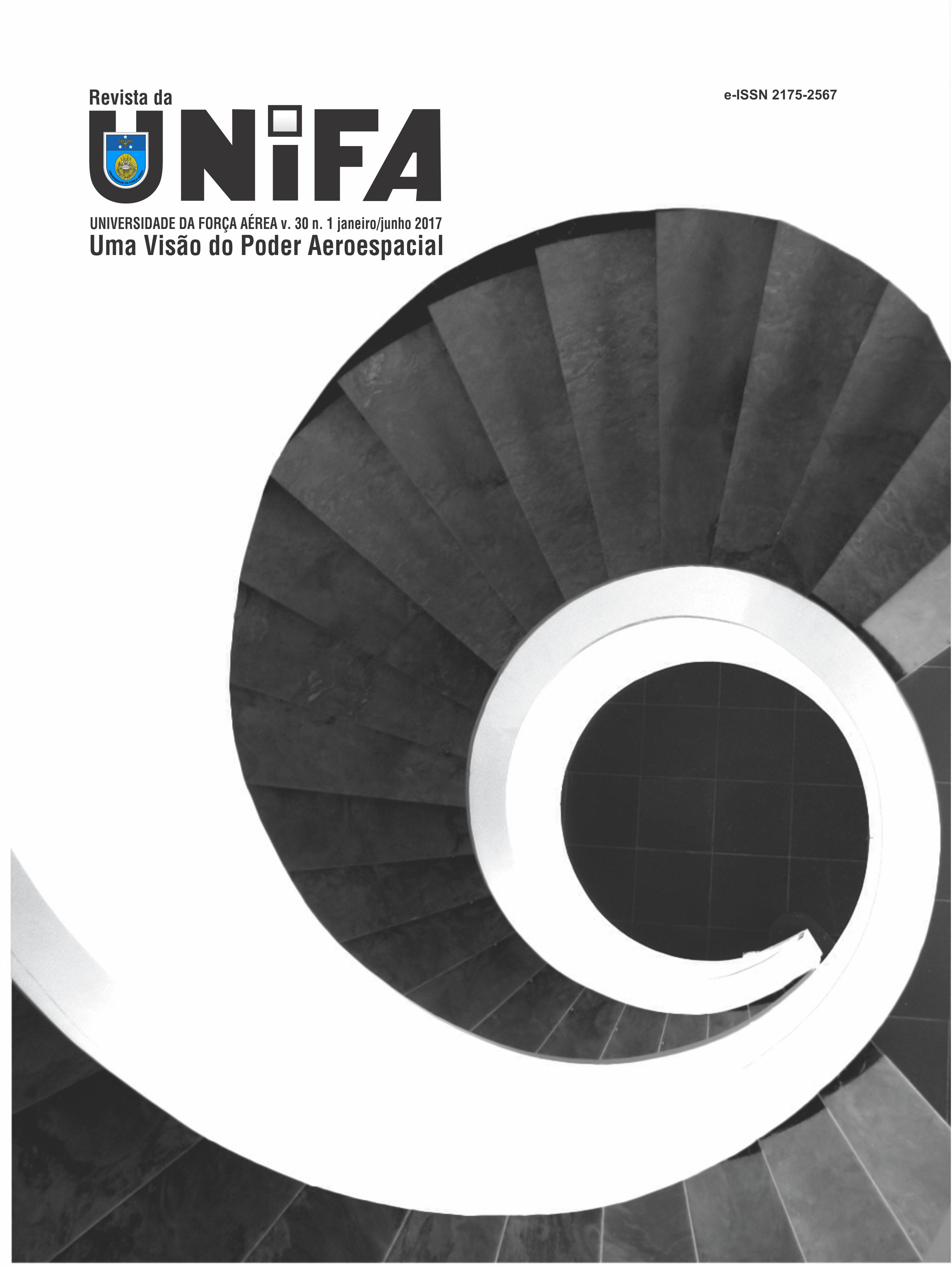Combat beyond visual range:
a complex environment for decision-making
DOI:
https://doi.org/10.22480/revunifa.2017.30.378Keywords:
Complexity factors, Combat Beyond Visual Range, Situational awareness, Decision-makingAbstract
The objective of this research is to evaluate how the complexity factors present in a Beyond Visual Range (BVR) combat arena influenced the achievement of situational awareness and the decision-making process of the F-5M pilots of the Brazilian Air Force (FAB). A field survey was carried out to analyze the perception of the 38 pilots present at EXOP BVR 1-2015. Based on these data, analyzes referring to the process of formation of situational awareness of Endsley (1995) were inferred to the universe of 52 operational pilots in combat with missiles beyond the visual range. The decision-making method of Rasmussen’s (1982) marked the study of the responses of pilots, which focused on the SRK cognitive control model. The analysis of the results highlighted that the eleven factors of complexity showed to the 38 pilots undermined the formation of the situational awareness at level 3, since those hindered the future projections of the squadrons members actions in the arena. However, the same factors influenced the decision-making within the Knowledge-Based Behavior (KBB) model, which evidences actions based on previous knowledge
References
BRASIL. Decreto nº 6.703, de 18 de dezembro de 2008. Aprova a Estratégia Nacional de Defesa, e dá outras providências. Diário Oficial da União, Brasília, DF, 2008.
BRYMAN, A. Qualitative research on leadership: a criticai but appreciative review. The Leadership Quarterly, v. 15, n. 6, p. 729-769, dez. 2004. Disponível em: <http://www.sciencedirect.com/science/article/pii/S 1048984304000840>. Acesso em: 23 jun. 2015.
COCHRAN, W. G. Técnicas de amostragem. Tradução de Fernando A. Moreira Barbosa. Rio de Janeiro: Aliança para o Progresso, 1965.
CORREA, S. M. B. B. Probabilidade e estatística. 2. ed. Belo Horizonte: PUC Minas Virtual, 2003.
ENDSLEY, M. R. Measurement of situation awareness in dynamic systems. Human factors. Texas Teck University, 1995 Disponível em: <http://uwf.edu/skass/documents/HF.37.1995- Endsley-Measure_001.pdf>. Acesso em: 06 jun. 2015.
_______. Situation awareness in aviation systems. ln: GARLAND, D. J.; WISE, J. A.; HOPKIN, V. D. Handbook of aviation human factors. Mahwah, NJ: Lawrence Erlbaum Associates, 1999.
ENDSLEY, M. R.; TlLBURY, D. M. Modular verification of modular finite state. New York: Plenum Press, 2004.
HENRIQSON, E. et al. Consciência situacional, tomada de decisão e modos de controle cognitivo em ambientes complexos. Produção, v. 19, n. 3, p. 433-444, 2009.
LAKATOS, E. M. Metodologia do trabalho científico. 6. ed. São Paulo: Atlas, 2001.
PERROW, C. Normal accidentes: living with high-risk technologies. Princeton, NJ: Princeton University Press, 1984.
RASMUSSEN, J. Human erros: a taxionomy for human malfunction in industrial installations. Journal of Occupational Accidents, v. 14, p. 311-333, 1982.
REASON, J. Human error. Cambridge, UK: Cambridge University, 1990.
SANTOS, A. C. O uso do método Delphi na criação de um modelo de competências. Revista de Administração, São Paulo, v. 36, n. 2, p. 2532, abr./jun. 2001. Disponível em: . Acesso em: 06 maio 2015.
SCHUTTE, P. C.; TRUJILLO, A. C. Flight crew task management in non-normal situations. ln: HUMAN FACTORS AND ERGONOMICS ANNUAL MEETING, 40., 1996, Philadelphia. Proceedings ... Philadelphia: [s.n.], 1996. p. 244-248. SHIMIZU, T. Decisão nas organizações. 2. ed. São Paulo: Atlas, 2006.
WOODS, D. D. Designs are hypotheses about how aircrafts shape cognition and collaboration. Ergonomics, n. 41, p. 168-173, 1998.
WOODS, D. D.; SARTER, N. Learning from automation surprises and going sour accidents. ln: SARTER, N.; AMALBERTI , R. Cognitive engineering in the aviation domain. Hillsdale, NJ: Erlbaum, 2005.
Downloads
Published
Issue
Section
License
Copyright (c) 2022 Revista da UNIFARevista da UNIFA permite que o (s) autor (es) mantenha(m) seus direitos autorais sem restrições. Atribuição-NãoComercial 4.0 Internacional (CC BY-NC 4.0) - Revista da UNIFA é regida pela licença CC-BY-NC









